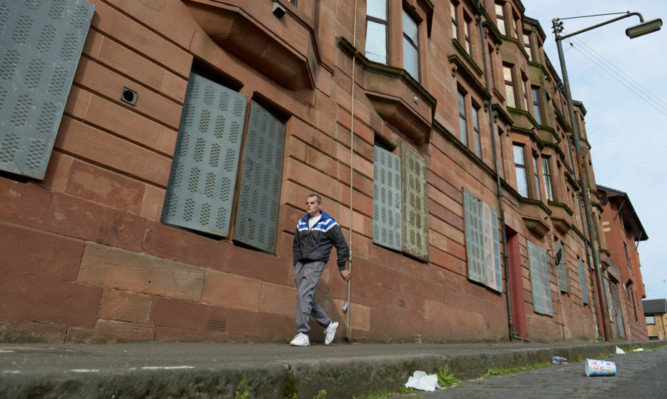More than half a million Scots, including 100,000 children, have had to live in severe poverty, a new report has revealed.
While relative poverty has fallen over the last decade, research by the Scottish Government showed that a greater proportion of those struggling to get by were facing either severe or extreme poverty.
Social Justice Secretary Alex Neil said it was a “disgrace” that so many people were affected.
With the report, which covers the 2012-13 year, citing welfare reforms as a “key factor” in the rise, Mr Neil claimed it was an “unfortunate and inevitable result of the UK Government’s failed austerity agenda and welfare cuts that are slashing incomes for some of our poorest households”.
People are classed as being in severe poverty if their household income is less than 50% of the UK average – or less than £11,500 in 2012-13.
Meanwhile, extreme poverty is when this is 40% or less of the UK median annual household income – or less than £9,200 in 2012-13
A total of 510,000 individuals – or 10% of the population – were living in severe poverty in 2012-13, the report showed, including 330,000 working-age adults, 100,000 children and 80,000 pensioners.
But when housing costs were factored in, the number facing severe poverty increased to 710,000.
This includes 500,000 who are in extreme poverty after paying their rent or mortgage. A total of 370,000 working-age adults, 90,000 children and 40,000 pensioners were all affected by this.
The report said that the problem of poverty had “deepened in recent years”, saying while relative poverty had fallen over the decade from 2002-03, “a greater proportion of households in poverty are now in severe or extreme low income”.
It added: “Those in poverty in 2012-13 are more likely to be in extreme low income than in 2002-03.
“This is especially the case after housing costs: in 2012-13, 50% of all people in poverty lived in extreme low income after housing costs, compared with 36% in 2002-03.”
Changes in employment were one reason given for the rise in severe and extreme poverty, with the report stating: “There have been decreases in real earned income, a rise in insecure employment (including zero hour contracts) and increases in the numbers in low pay.
“The combination of these factors is likely to increase the numbers living in severe and extreme poverty, and reduce the chances of those in low-paid work to lift their families out of poverty.”
Inflation has seen costs rise faster then wages, with this “adding to the pressures being experienced by low-income families”.
The research also said that “welfare reform is another key factor”, adding: “For low-income working families reliant on benefits and tax credits, cuts combined with changes in eligibility have seen household income decrease in 2012-13.”
It warned that more welfare changes are to come, stating: “The majority of the decrease in welfare expenditure is expected to be in the two years to 2015-16.
“Continuous, cumulative real-terms cuts in benefit levels are expected, affecting both working households and households not in employment.”
The report concluded: “In short, poverty is changing; work is no longer a guarantee of a life free of poverty; people in poverty face increasing costs; and those in receipt of benefits and tax credits – which of course includes many in work – are finding their incomes squeezed.”
Mr Neil said: “With employment increasing and unemployment down, Scotland is outperforming the rest of the UK, yet the statistics show that a job is no longer any guarantee against severe or extreme poverty.
“That’s why we opposed cutting in-work tax credits and why the Scottish Government and its agencies are paying the living wage, encouraging other employers to follow suit.
“We have put tackling poverty and inequality at the heart of government, through policies like the council-tax freeze, free prescriptions and expanding childcare provision while we are mitigating the worst of the welfare cuts by replacing income lost through the bedroom tax or council tax benefits cuts.
“That action is making a real difference and we will continue to make the argument for a fairer welfare system.”
